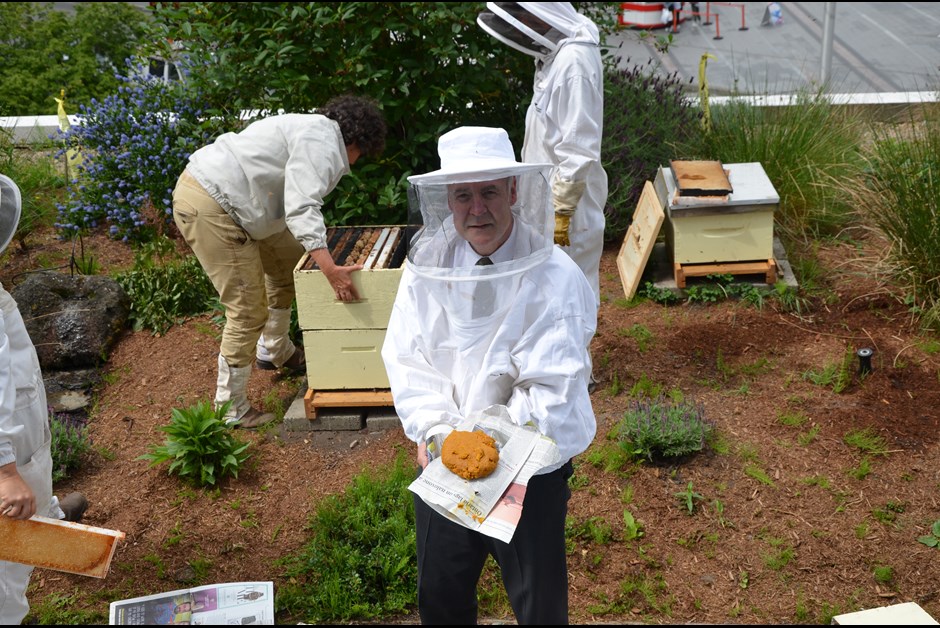THE BEES ARE BACK IN TOWN - THE BUZZ ON FAIRMONT BEES WITH BEE BUTLER MICHAEL KING (MAY 2016)
Learn more about Fairmont Waterfront or make a booking.
Our Waterfront apiary has been occupied for 2 weeks now and in those two weeks we have already been able to showcase our garden and our bee initiatives to several interested guests and one thing is for sure, when we have the opportunity to tell the story of the bees to our guests they leave with a greater appreciation for all our little pollinators do in our world and how we take them so much for granted. Whether it is the solitary bees like mason bees, sweat bees, leaf cutter bees or the quasi social bumble bees or the more well known honey bees, our pollinators help grow food for us as well as help bring colour and substance to the world as they pollinate and cross pollinate.
Our bees at Fairmont Waterfront are needing a little extra helping hand this week as we have noticed that there is not a lot of pollen coming back to the hive which of course is critical for the food supply needed for the eggs and larva within the hives. We have therefore added some protein to their hives in the form of some pollen patties and some sugar syrup which will help provide energy and a food source. Pollen patties are made from dry sugar, water, brewers yeast, soy flour and natural bee pollen and is simply added to the top of the hive so that the bees can feed from it at will and transfer it to the hive cells for a hive food source or eat directly. The sugar syrup is a 2:1 formula of 2 parts sugar to 1 part water and is added into a feeder placed at the inside edge of the hive by removing one of the 10 frames in the hive to accommodate the feeder.
We will revisit the hives again at a 10 day schedule which is standard for bee hive inspections to ensure that we are always on top of any changes in the hive and can act quickly to correct any issues which may arise. Why 10 days you ask ? The eggs and the larva grow within that time frame, the eggs grow into a larva after 3 days and the larva grow and pupate within a cocoon at the 8 days stage when they are then ‘capped’ and become what we term “Capped brood” where they remain until 13 days later in the case of a worker bee and emerge after 21 days as a fully formed bee. If the hives are visited every 10 days a beekeeper can confirm if eggs and larva are present and that the hive appears to be in good health. If eggs and larva are not present this tells us that something is wrong with the Queen and that she has either died or is in very poor health over the past 8-9 days. If we find larva but no eggs we know that she had been laying eggs within the past 8 days. If a bee keeper does not keep to the 10 day inspection rule they run the risk of losing their hive to ill health or even possibly having a hive that swarms on them by not inspecting and looking for signs of overpopulation which lead to the creation in the hive of ‘swarm cells’ which will lead to a swarm leaving the hive to find a new home within approximately 13 days!
Keeping bees means keeping yourself on that 10 day inspection cycle or you face the consequences of nature working it’s own solutions to a problem.
Like everything in life, staying involved and interested in what is going on around you is the secret to avoiding unnecessary surprises. Life may not be predictable but by staying involved you can ensure that events that occur are more likely to be more easily managed. Managing bees is rather like managing your life in that respect wouldn’t you say?
Learn more about our bees at: Fairmont Waterfront Green Hotel Initiatives
For more #BeeButler posts visit: Fairmont Buzz on Bees
#FairmontBuzz #BuzzOnBees #BeeButler #BeeSustainable
